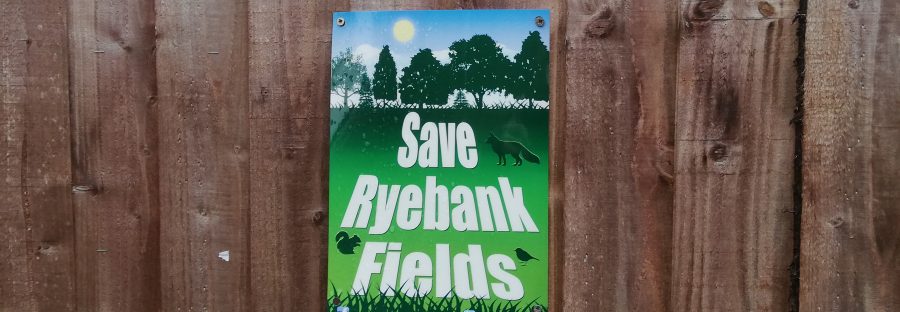‘We need a miracle’: the battle to save Ryebank Fields from development
- Man Met would profit from sale of former playing fields
- Developers hope to provide 70 new affordable homes
- Campaigners are fighting against proposals
A residents’ campaign group is battling to stop the sale of Ryebank Fields in Chorlton for new housing.
The current landowners, Manchester Metropolitan University, are seeking to sell the disused land for it to be redeveloped into affordable housing.
The university was given the land by the council in the 1970s to be used as sports playing fields. If the plans are approved, Chorlton Community Led Housing Group hopse to build around 70 new houses on the site.
The “low density, environmentally firendly” modular homes will be aimed at people from all across the community, including the elderly, young families and social rent or shared ownership housing.
In a statement, Man Met said it was “committed to ensure that the Ryebank Fields site makes a valuable contribution to the needs of the community of Chorlton and of Manchester as a whole. This means delivering a comprehensive housing development to meet a range of requirements, of different tenures, sizes and values, including affordable housing.”

The proposals have met with staunch opposition from the local community. Friends of Ryebank Fields was set up to stop what members view as unnecessary, damaging and hypocritical plans. Their online petition has a target of 2,000 signatures has reached over 1,300 so far and they have more than 600 supporters on Facebook.
Nigel Woodcock is one of the leading campaigners who was also part of the successful ‘Save Turn Moss’ campaign which saw off Gary Neville’s plans for new training pitches in Trafford last year.

He concedes that this time he might not see the same outcome: “We need a miracle. We got one with Turn Moss and we need one here.
“A lot of people are saying ‘No, not one blade of grass!’,I’m more in to a bit of compromise.”
Some of the community’s disgruntlement stems from the sale itself: “Our argument is: you’ve not used it for sport for over 20 years. It’s now become diverse and there’s lots of species of animal living here, including foxes, 65 different species of bird. We’re calling upon MMU to give the land back to the people or to the council to be used as a wildlife haven,” he said.

Man Met boasts an impressive environmental record, having won 1st place in the People & Planet University League in 2017. Mr Woodcock said the biodiversity of the land could be disrupted or damaged due to the building process.
“That starts to look like a joke if they go ahead and trash green space for profit on land that they were given,” he said.
On the environmental issues, Man Met said: “Our commitment is to provide a significant amount of public open space, enhancing the relationship to Longford Park and respecting and improving the key environmental features of the site.”
Mr Woodock also pointed out that the area is prone to flooding and many local residents have water pumps installed in their cellars. He said trees and other plant life that currently occupy Ryebank Fields act as a natural flood defence, sucking up any excess ground water.

Mr Woodcock, who is also Chair of Friends of Longford Park, said: “There’s 1,400 trees on here that suck up water. If you develop it and put down a load of concrete and rip up those trees, then the water has to go somewhere.”
Margaret Manning, of Chorlton Community Led Housing Group, told the Northern Quota: “We would retain all of the mature trees if we get the chance to get our ideas implemented.
“We’re also willing to work with the Friends of Longford Park. With some of the money that would be available we could work with them to enhance the biodiversity of the park.”
Mr Woodock added that the trees play an important role in helping to provide clean air with the busy A56 close by.

Margaret Manning is aware of the concerns, saying: “One of our main proposals is that any housing would be modular, then you don’t need to dig as much foundations. This would mitigate some of the traffic issues during construction. We will also be encouraging new residents to walk and cycle. We will have bike sheds.
“We’ll work with Longford Road residents over any other traffic issue.”
One suggestion is that a through road could be built connecting Rye Bank Road and Longford Road to help alleviate traffic. For this to happen though, the road would have to go straight through the Nico Ditch.

The ditch was built by the Anglo Saxons to mark the boundary between Mercia and Northumbria. Friends of Rybank Fields are currently in the process of applying for protected status for it.


